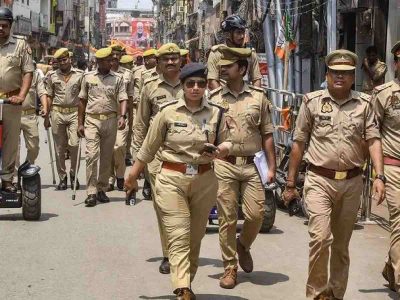Delhi remains a city haunted by the plight of missing children. While official data suggests a slight decline in reported cases, the number of children who remain untraced continues to rise, pointing to systemic failures in child safety and law enforcement. In 2024, missing children cases dropped by 6.97% compared to 2023, yet thousands of families are still left searching for their lost children.
According to the Delhi Police, 5,846 children were reported missing in 2024, compared to 6,284 in 2023. However, as of February 28, 2025, another 866 cases had already been recorded. The statistics, however, do not tell the full story. Many cases remain unresolved for years, leaving families in a constant state of distress.
Rising number of untraced children raises concerns
In 2024, the Delhi Police managed to locate 4,496 missing children, yet 1,350 remain untraced. In contrast, 5,286 children were found in 2023, while 998 remained missing. This means that despite fewer reported cases in 2024, the proportion of untraced children was higher—a pattern that has been worsening since 2020. What was once a 7% rate of untraced cases has climbed to a concerning 23.09% by 2024.
A senior Delhi Police official explained that the numbers do not always reflect the ground reality. “Even if more children are traced in a particular year, the investigations may have begun much earlier. For instance, if a child went missing in 2024 but was found in 2025, the recovery is still recorded under 2024,” the official said.
Girls account for the majority of missing children
A disturbing trend has persisted for over a decade—girls make up the majority of missing children in Delhi. In 2025, girls accounted for a staggering 74.59% of missing cases. In 2024, they comprised 71.82% of all reported cases. Police data indicates that this gender disparity has grown since 2020. Before then, the numbers were nearly equal, though girls consistently outnumbered boys in missing cases.
The increasing number of missing girls also means a higher proportion of untraced cases. Many of these disappearances, police say, are linked to voluntary elopements. “A significant number of these cases involve teenage girls running away with their partners. Most of them are aged between 12 and 18,” a police official stated.
The numbers reinforce this concern—out of the 5,846 missing children in 2024, 5,044 belonged to the 12-18 age group. In comparison, 488 were aged 8-12, and 314 were under 8 years old. In just the first two months of 2025, 768 children were reported missing, with 610 of them being girls. Only 329 of these children were found, while 439 remain untraced. Among the missing girls, 362 are yet to be located.
Operation “Milap”: A glimmer of hope in a bleak scenario
Between January 1 and February 28, 2025, the Delhi Police reunited 39 missing or kidnapped children with their families under Operation “Milap.” This initiative, launched in December 2014 by the Anti-Human Trafficking Unit (AHTU), focuses on tracking and rescuing missing children.
Delhi has long reported a high number of missing children cases, with an average of 16-19 children disappearing daily in the late 2010s. In 2017, 5,925 children went missing, including 3,597 girls and 2,328 boys. Though the numbers have decreased since the alarming 7,948 cases reported in 2015, the problem remains persistent.
Operation “Milap” has made notable progress, successfully reuniting 333 children in 2019 and 104 children between March and November 2024. The efforts have often taken officers beyond Delhi’s borders, with searches extending into Haryana, Bihar, and Uttar Pradesh.
Why are children going missing?
Children disappear for various reasons—some are abducted for trafficking, others run away, and some get lost in crowded areas such as railway stations. Delhi remains a hotspot for child trafficking, with an estimated 11 million children trafficked across India.
Children from economically weaker backgrounds, particularly those aged 6-17, are at the highest risk. Social media has also emerged as a growing tool for traffickers, who often lure teenagers aged 13-17 with false job promises. Many children run away due to academic pressure, family disputes, or domestic abuse, further complicating recovery efforts.
Also Read: Delhi: How hospitals are sleepwalking into fire disasters
Several obstacles hinder rescue operations. Families often fail to inform the police when a missing child returns—66% of traced children in 2018 had returned home on their own. Delays in reporting give traffickers time to relocate victims, while missing photographs or incorrect details significantly slow down investigations.
Cracking a trafficking ring: A chilling case study
On January 21, 2025, a 30-year-old woman living at New Delhi Railway Station reported her four-month-old daughter missing. The woman, originally from Bihar, sold pens at the station and lived there with her two daughters after the death of her husband and a subsequent remarriage. CCTV footage later revealed a woman abducting the baby. Further investigation linked the suspect to an October 2024 case involving the kidnapping of a two-and-a-half-year-old boy from the same station.
Inspector Vishwanath Paswan, who led the investigation, identified similarities between both cases, including the suspect’s escape route to Badarpur via auto-rickshaw. Under Deputy Commissioner KPS Malhotra, the Delhi Police uncovered a child trafficking network operating across the city.
Using CCTV surveillance, call records, and an IMEI match, police identified the suspect as 35-year-old Aarti from Faridabad. She and her husband, Suraj, were arrested. Aarti later confessed to working with Priya (Kanta Bujhel), a nurse, and Nirmala (Nimmi), a document forger, to abduct and sell children to childless couples. The trafficking ring operated under the guise of illegal adoptions, charging between Rs 50,000 and Rs 4 lakh per child, depending on gender. Two kidnapped children were rescued, and further investigations exposed a vast network of buyers and suppliers. Over the past three years, Delhi has recorded 11,869 child abductions, with 80% of the 18,246 missing children eventually found.
Why tackling this crisis remains a challenge
The Delhi Police have employed multiple strategies to locate missing children, including counselling, the Zonal Integrated Police Network (ZIPNET), facial recognition technology, CCTV surveillance, and informant networks.
The Delhi Commission for Protection of Child Rights (DCPCR) has mapped missing child hotspots across the city. By June 2021, they had traced 1,541 of 4,798 missing children, with 33 identified as abuse survivors. However, weak enforcement, lack of public awareness, and the overwhelming volume of cases continue to hinder progress. Strengthening community vigilance and preventive measures remains crucial.
Despite ongoing efforts, Delhi’s record on missing children continues to worsen. With thousands still untraced each year, the crisis demands not just intervention but a fundamental rethinking of how authorities, communities, and families can work together to protect the city’s most vulnerable residents.





